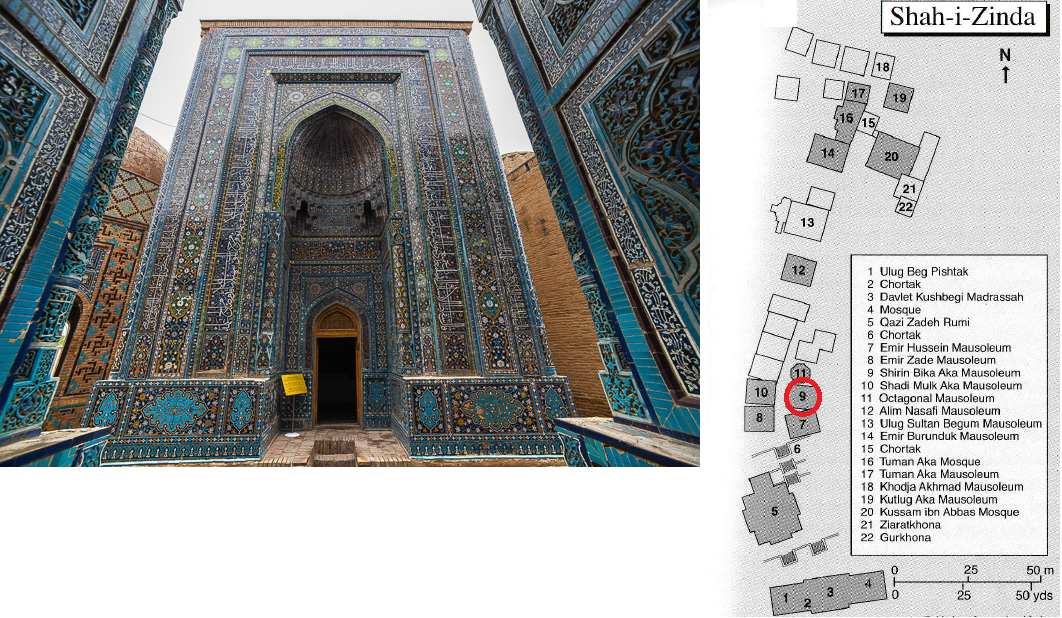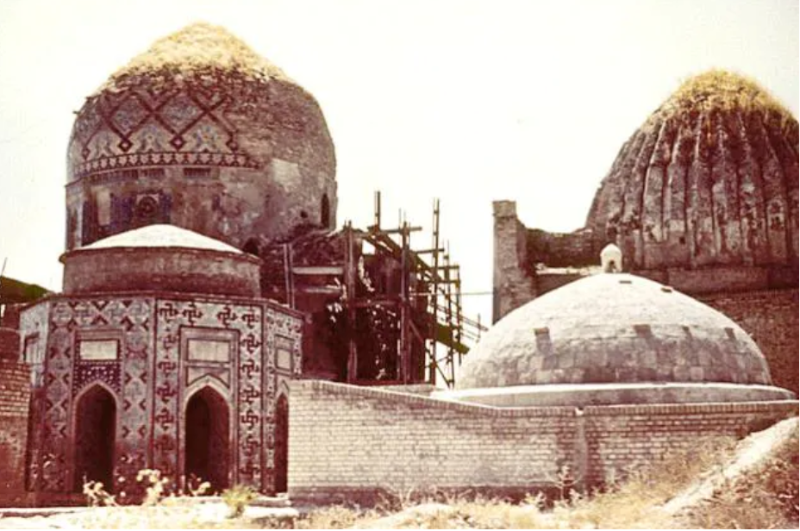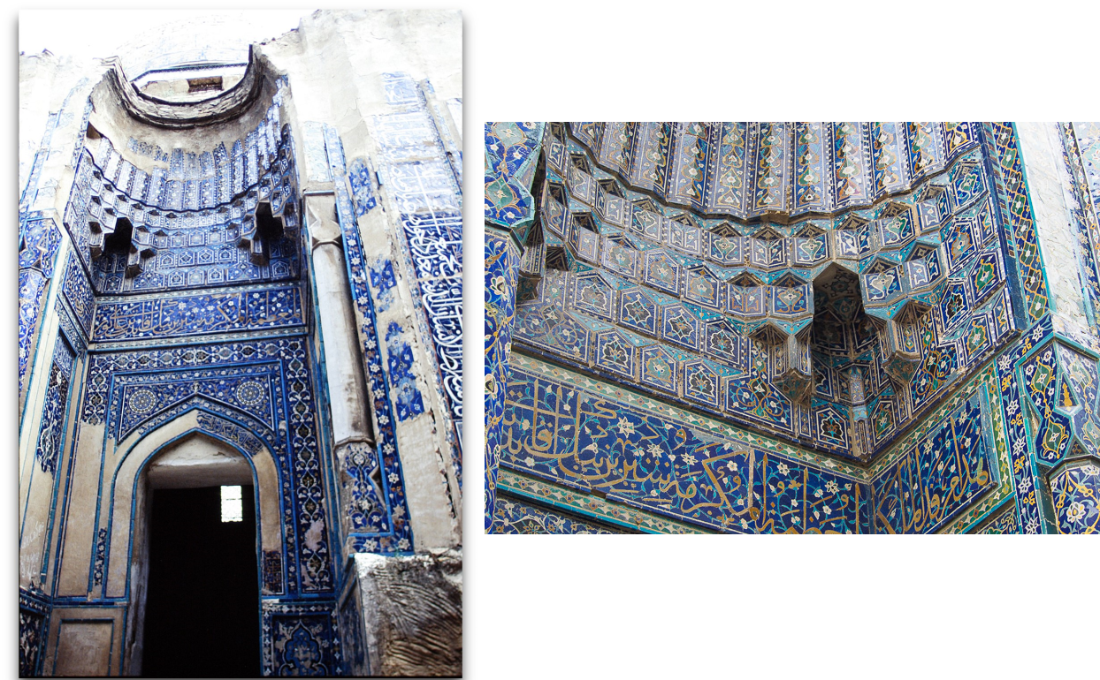9 Shirin Bika mausoleum
Opposite the tomb of Shad-i Mulk Aqa is a tomb named Shirin Biqa Aqa from 1385. She was a sister of Timur, and unlike all of the previously built monuments at the site the ceramic decoration on the edifice of Shirin Biqa Aqa is completely flat.
The ceramic decoration is mosaic faience which was also used at the Gur-i Amir.
One of the great advantages of mosaic faience is the ability to create a design that resembles painted or inked designs on paper with sharp outlines.
The inscriptions have a quality in mosaic faience that appears to reproduce the effect of writing in ink on paper. This process is incredibly expensive and labor intensive. Therefore, buildings with mosaic faience indicate the wealth of whomever sponsored the building.

The picture below, taken from the south, shows how the mausolea look like before the restaurations of 2005.
On the left you can see the octagonal mausoleum (8) an behind of it, the Shirin Bika Aka mausoleum (9). On the right you can see the dome of the Shadi Mulk Aka mausoleum (10).


Toewijzing
Prior to restoration the monument's facade was heavily weather-worn and missing the entire cornice, but we are fortunate that the identifying plaque above the entrance, partly shielded from the elements, survives in full. It reads:
This is the tomb of the great and noble Shirin Beg Aqa, daughter of Taraghay, (may) the light of God (be upon) her spirit, AH 787.
The date corresponds to 1385-86, indicating the year of her death. It may be assumed that construction of the tomb began shortly thereafter and was finished several years later, or possibly longer.
Socrates en Sa'di
The calligraphic bands framing the pishtaq were in considerably worse condition than the above inscription, with at least 50-75% of the tiles missing, with whole sections effaced. It is not clear how the conservators were able to infill the missing sections with restored text unless they could reasonably infer the missing portions, perhaps from the phrases appearing in other contexts. On the right-hand side of the facade, the bands began with the words "Socrates said..." and then recount some several aphorisms of his which were popular among Persian authors at the time, such as "Man in this world complains in all circumstances...". One must assume that the conservators were able to identify contemporary Persian texts which made the same references, then reproduced the missing sections accordingly.
In additions to sayings of Socrates, there is an inscription of poetry on the arch taken from the Gulistan (Rose Garden) by Sa’di. This text is a collection of anecdotes and admonishments on how to conduct the best kind of ethical and moral life arranged into eight chapters.
One of the texts quoted here reads, “The world my brother will abide with none, by the world's maker let thy heart be one.”